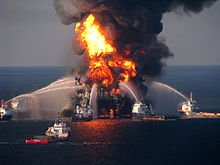Fish return to restored bay in just months
 Scientists from the Southwest Florida Water Management District began seeing dramatically increased diversity in species of fish just months after the Hunters Cove Revegetation Pilot Project was complete.
Scientists from the Southwest Florida Water Management District began seeing dramatically increased diversity in species of fish just months after the Hunters Cove Revegetation Pilot Project was complete.
Working with the Florida Fish and Wildlife Conservation Commission, scientists conducted fish surveys in January of the fenced areas of eelgrass. They found 11 different species of freshwater, estuarine and saltwater fish in the fenced areas. Only two species were found in a control area outside the fences.
The 11 species were Atlantic needlefish, bowfin, largemouth bass, bluegill, tidewater mojarra, bluefin killifish, rainwater killifish, striped mullet, white mullet, Seminole killifish, and gray snapper.
The project is part of the community effort to improve Kings Bay by restoring eelgrass in Hunters Cove, a 10-acre area surrounding Hunters Springs. Lush mats of eelgrass were transferred to Hunters Cove in November 2015 and placed on the bottom of the cove in fenced sections. (The fences protect the eelgrass from grazing manatees until it has a chance to establish itself.)
“Even though the eelgrass was planted in the fenced-in areas in Hunter’s Cove a few short months ago, the results of this survey demonstrate that the vegetation is already providing valuable fish habitat,” said Kym Rouse Holzwart, senior environmental scientist.
To learn more, visit www.WaterMatters.org/Springs.
[su_divider top=”no”]Oil spill scientists share research
 A series of webinars, geared to both scientists and interested residents, are being developed by the Sea Grant Oil Spill Science Program.
A series of webinars, geared to both scientists and interested residents, are being developed by the Sea Grant Oil Spill Science Program.
The most recent – “Chilling with Your Chums: How did the oil spill impact Gulf fisheries?” and “Where Did the Oil Go?” – were held last month in Texas and Alabama. Other previous webinars include “Beyond the Response: A look at the science and policy behind dispersants,” “Exploring Oil Spill Impacts in the Deep Gulf of Mexico” and “Impacts of the Deepwater Horizon Oil Spill to Gulf Wetlands.”
“They’re obviously complicated topics but we try very hard to make the presentations interesting and understandable for the average person – and we encourage questions,” notes Monica Wilson, Sea Grant oil spill specialist.
The research, presentations and webinars are expected to continue through another three years with new papers on the impact of the oil spill being published almost daily, she said. To listen to previous presentations, visit https://gulfseagrant.wordpress.com/oilspilloutreach/presentations/ or email monicawilson447@UFL.EDU for notifications of upcoming events.
[su_divider top=”no”]USFWS proposes down listing manatees
 Significant improvements in populations and habitat conditions, and reductions in direct threats, have allowed the U.S. Fish and Wildlife Service to propose that the West Indian manatee be down-listed from endangered to threatened status under the Endangered Species Act.
Significant improvements in populations and habitat conditions, and reductions in direct threats, have allowed the U.S. Fish and Wildlife Service to propose that the West Indian manatee be down-listed from endangered to threatened status under the Endangered Species Act.
“Manatees no longer fit the classification of endangered because our models show there is only a 2.5% chance of their populations falling below 4,000 animals in the next 100 years,” said Peter Plage, a scientist in USFWS’s St. Petersburg office. The models, however, do not take the effects of climate change or red tide – which killed 276 manatees in 2014 – into account.
The proposal to downlist the manatee to threatened will not affect federal protections, he said. Many of these protections, such as the new no-wake zones recently created for western Pinellas County, are established under a different law – the Marine Mammal Protection Act – and will be implemented as soon as signs are installed. USFWS also will continue to review comments on a proposal to establish greater protection for manatees at Three Sisters Springs in the Crystal River National Wildlife Refuge.
Public comments on the downlisting proposal were accepted for 90 days earlier this year and USFWS expects to announce a decision within the next 12 months.
[su_divider top=”no”]Record rains drive slight decline in bay water quality in 2015
Two major segments of Tampa Bay showed slight declines in water quality last year, following record-setting summer rains that saw large volumes of untreated or partially treated stormwater and wastewater discharged to the bay.
Old Tampa Bay and Middle Tampa Bay – which together comprise 50% of the open waters of Tampa Bay — failed to meet their average annual targets for chlorophyll-a, an indicator of microscopic algae in the water. They have been designated as yellow, or “caution” areas, in the annual “stoplight” report card used by bay managers to help assess the bay’s health.
Old Tampa Bay had exceptionally high chlorophyll levels for the months of August and September in comparison to previous years for which data is available (1974-2014). Middle Tampa Bay had chlorophyll concentrations that were higher than normal in September.
All major bay segments had sufficient sunlight penetrating to the bay bottom to foster the growth of underwater seagrasses, a positive sign indicating that the elevated chlorophyll levels in Old and Middle Tampa Bay may be a short-lived, temporary response to the record-setting rains of last summer.
Good water quality is critical to recovering underwater seagrasses that are the foundation of a healthy bay. Seagrass surveys announced last spring showed that Tampa Bay had 40,295 acres of seagrass, more than at any time in the last 60 years.
Prior to 2015, all bay segments met water quality goals for three years in a row.
[su_divider]